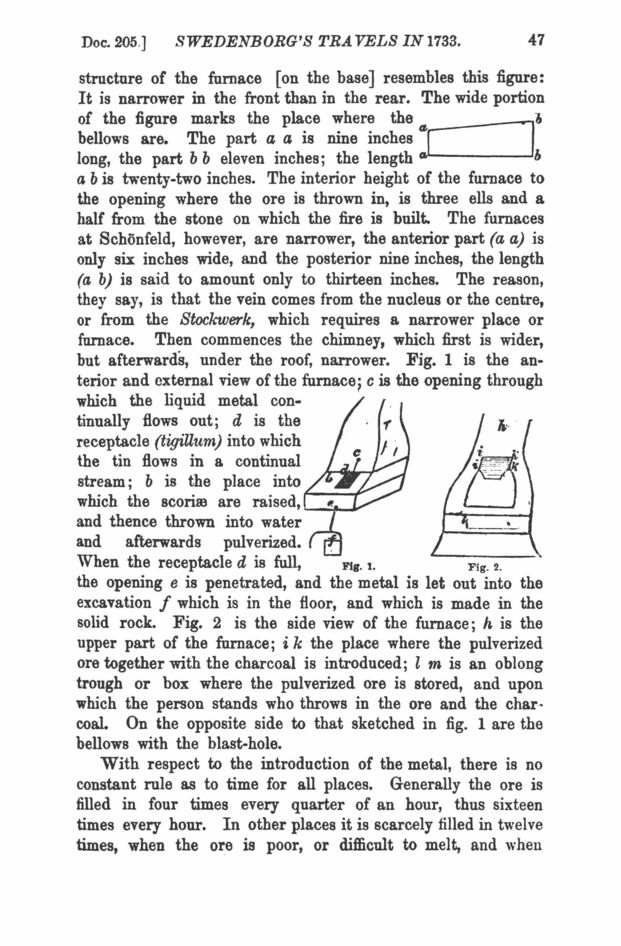
Full resolution (JPEG) - On this page / på denna sida - Sidor ...

<< prev. page << föreg. sida << >> nästa sida >> next page >>
Below is the raw OCR text
from the above scanned image.
Do you see an error? Proofread the page now!
Här nedan syns maskintolkade texten från faksimilbilden ovan.
Ser du något fel? Korrekturläs sidan nu!
This page has never been proofread. / Denna sida har aldrig korrekturlästs.
Doc. 205. ] 47
SWEDENBORG’S TRAVELS IN 1733.
structure of the furnace [on the base] resembles this figure:
It is narrower in the front than in the rear. The wide portion
of the figure marks the place where the b
bellows are. The part a a is nine inches
long, the part bb eleven inches ; the length
b
a b is twenty-two inches. The interior height of the furnace to
the opening where the ore is thrown in, is three ells and a
half from the stone on which the fire is built. The furnaces
at Schönfeld, however, are narrower, the anterior part (a a) is
only six inches wide, and the posterior nine inches, the length
(a b) is said to amount only to thirteen inches. The reason,
they say, is that the vein comes from the nucleus or the centre,
or from the Stockwerk, which requires a narrower place or
furnace. Then commences the chimney, which first is wider,
but afterwards, under the roof, narrower. Fig. 1 is the an
terior and external view ofthe furnace; c is the opening through
which the liquid metal con
tinually flows out; d is the
receptacle (tigillum) into which
the tin flows in a continual
stream; b is the place into
which the scoriæ are raised,
and thence thrown into water
and afterwards pulverized.
When the receptacle d is full,
the opening e is penetrated, and the metal is let out into the
excavation f which is in the floor, and which is made in the
solid rock. Fig. 2 is the side view of the furnace ; h is the
upper part of the furnace; ik the place where the pulverized
ore together with the charcoal is introduced ; I m is an oblong
trough or box where the pulverized ore is stored, and upon
.
which the person stands who throws in the ore and the char
coal. On the opposite side to that sketched in fig. 1 are the
bellows with the blast-hole.
Fig. 1. Fig. 2.
h
With respect to the introduction of the metal, there is no
constant rule as to time for all places. Generally the ore is
filled in four times every quarter of an hour, thus sixteen
times every hour. In other places it is scarcely filled in twelve
times, when the ore is poor, or difficult to melt, and when
<< prev. page << föreg. sida << >> nästa sida >> next page >>